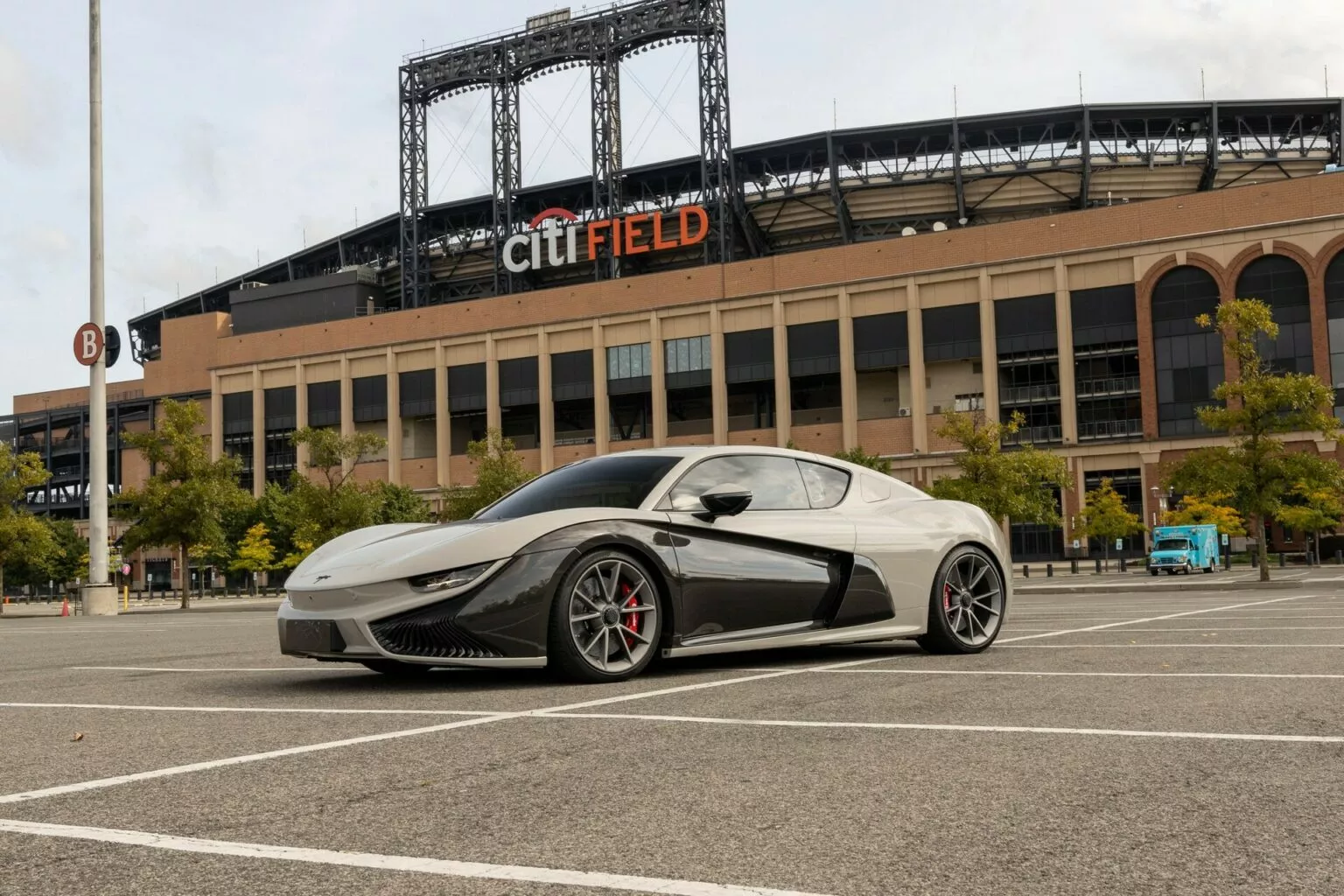2026 Mullen GT Under a green tent in Citi Field Lot E sits an unidentified coupe. With each closing stride, its low-slung form, covered in flat gray with a huge black swoosh, becomes more hidden. On the nose is a dragonfly insignia.
A side swoosh in exposed carbon directs air to a pair of heat exchangers. Mullen is written on the tail. The Mullen GT is an electric sports vehicle from a company that expects to begin deliveries in the United States in 2025 or 2026.
Mullen’s history is difficult, as it is for many automobile businesses. It all started in 2015 with the Shanghai launch of the Qiantu K50, an electric sports vehicle parent firm Great Wall Huaguan planned to market in China from 2018 to 2020.

Subsequently, during the 2019 New York Car Show, Mullen Automotive of California vowed to import kits and sell finished, fully certified vehicles in 2020. We’ve been following various EV manufacturers that have yet to sell a single vehicle in the United States, such as Bollinger, in which Mullen now holds a 60% share.
Mullen’s Nasdaq IPO occurred in November 2021, and it had a second presentation at the Los Angeles Car Show a few weeks later, an SUV coupe named the Mullen Five. So, in this Queens parking lot, we’re committing an afternoon to Mullen’s illusive two-seater, the rebadged EV that Qiantu stopped producing three years ago.
When Mullen planned to construct rebadged Chinese cargo vans and trucks in Mississippi, the K50 went by at least four names. It was the Dragonfly K50, Mullen K50, Qiantu K50 by Mullen, or Mullen Dragonfly until last March.

Mitchell Dyche, an engineer with a six-foot-five frame, sits next to us in the cramped cabin. He claims he chose the 19-inch center-lock wheels, Brembo brakes, and Pirelli P Zero tires. Everything else is Qiantu’s original idea, down to the manufacturer etchings on the glass.
It appears to be in good condition up close. The Mullen GT features the proportions and dimensions of a mid-engine automobile both inside and out. It is around the same size as an Acura NSX.
The body gaps may be smaller, but this isn’t our expected ragged prototype. A massive portrait touchscreen canted toward the driver is still in the works, as is a digital instrument panel and a large curved shifter.
Unlike many Chinese vehicles, the GT does not openly imitate the design of any renowned brands. While it is a demonstration, it has significant shine.

The dual-motor design is quiet and noise-free, the regen is seamless, the body movements are regulated, and the steering is nicely weighted. The specifications for a performance EV are reasonable:
A 78.0-kWh T-shaped lithium-ion battery with most of its cells behind the driver, a 78.0-kWh T-shaped lithium-ion battery with most of its cells behind the driver, and a 230-mile range are all part of the package.
The GT gets a touch perkier in Sport mode, though we didn’t feel either motor transferring torque in our three brief laps. Grip and stopping power are both expectedly strong.

Nevertheless, Mullen has reduced the GT’s performance since March, when it promised an “EV supercar” capable of reaching 60 mph in 1.95 seconds and exceeding 200 mph.
According to court filings, Mullen reacquired the rights to market the K50 and negotiated a contract issue at that time after it reportedly defaulted on roughly $23 million owing to Qiantu just months after the New York unveiling.
Mullen has recently revised his supercar performance figures to 4.2 seconds and 125 mph. The cost is $150,000.
Mullen has stated that the GT (and GTRS) will be built in the old AM General facility in Indiana, where the Five crossovers and Bollinger B1 and B2 will also be built (Bollinger had refunded customer deposits in 2022). Bookings start at $1000 for delivery in late 2025 or early 2026.

From an investor’s standpoint, Nasdaq wants to delist Mullen stock because it is trading below the $1 limit (it is now trading at 50 cents as of Friday), and Mullen is also suing several of the top investing firms, including Charles Schwab, for stock manipulation.
We won’t go into much detail regarding Mullen, such as how the firm was created in 2014 after purchasing the remnants of Coda Automotive and then attempting to resell that company’s China-rebadged EV as the Mullen 700e.
Given where we are in 2023, the Mullen GT appears to be a possibility but not a guarantee. As more new automakers learn, creating and marketing automobiles to Americans is difficult.

